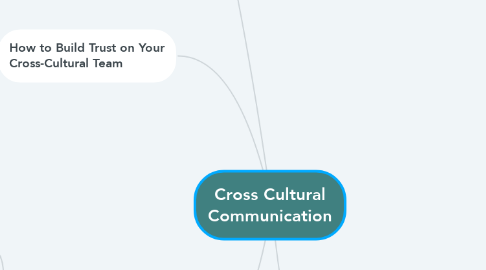
1. How to Run a Meeting of People from Different Cultures
1.1. Be mindful of differences
1.1.1. The key to showing cultural sensitivity in the workplace is “being aware” of the variations that exist among cultures.
1.2. …But don’t obsess over them
1.2.1. You can’t always anticipate how cultural differences play out.
1.3. Set expectations
1.3.1. You want to be clear about what you expect and how meetings will run.
1.4. Build relationships
1.4.1. Getting to know the personalities on your team is sound management practice in any culture.
1.5. Be creative with conflict
1.5.1. One of the biggest cultural differences is the degree to which open debate and disagreement are viewed as a positive
1.6. Be flexible
1.6.1. If cultural differences are making group meetings particularly tricky, try “soliciting coworkers’ opinions in other venues.
1.7. Consider rewards
1.7.1. You need to institutionalize rewards around what you’re trying to motivate people to do so that it’s hardwired in.
1.8. (Knight, R. 2015)
2. How to Build Trust on Your Cross-Cultural Team
2.1. Structure the team for success
2.1.1. The best way to ensure a positive process in a team is to create initial conditions.
2.2. Understand the cross-cultural makeup of your team
2.2.1. The leader of any cross-cultural team needs to understand the different cultures, language differences, and “fault lines”.
2.3. Set very clear norms and stick to them
2.3.1. The team leader must establish team norms that everyone sticks to.
2.4. Find ways to build personal bonds
2.4.1. The most powerful tools in easing potential conflict on a team is establishing personal connections.
2.5. When conflict arises, address it immediately
2.5.1. If tension arises, address it quickly so that a small conflict doesn’t balloon into something impossible to manage.
2.6. (Molinsky, A., & Gundling, E., 2016)
3. What the Best Cross-Cultural Managers Have in Common
3.1. They consider change as normal, positive, and a source of opportunity.
3.2. They rely on creative, outsider thinking and adaptation to confront new situations.
3.3. They are able to reinvent themselves and experiment with new identities as they move into new settings.
3.4. They become experts at the subtle and emotional aspects of transition.
3.5. They easily learn and use new ways of thinking, taking risks that lead to self-efficacy.
3.6. (Brimm, L. 2016).
4. 3 Situations Where Cross-Cultural Communication Breaks Down
4.1. Eliciting Ideas
4.1.1. Participation norms differ greatly across cultures.
4.2. Surfacing Disagreement
4.2.1. Comfort with public disagreement is another big source of conflict on cross-cultural teams.
4.3. Giving Feedback
4.3.1. Constructive criticism is an essential part of global teamwork.
